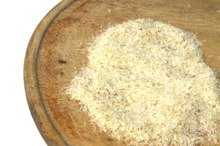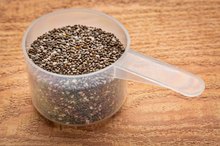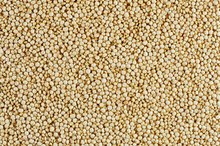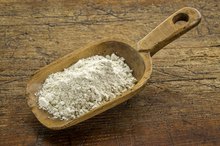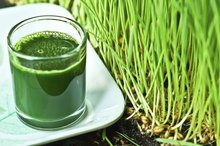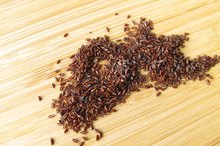What does fact checked mean?
At Healthfully, we strive to deliver objective content that is accurate and up-to-date. Our team periodically reviews articles in order to ensure content quality. The sources cited below consist of evidence from peer-reviewed journals, prominent medical organizations, academic associations, and government data.
- American Heart Association: Whole Grains and Fiber
- National Institutes of Health: MedlinePlus: Fiber
- National Institutes of Health: Rough Up Your Diet
The information contained on this site is for informational purposes only, and should not be used as a substitute for the advice of a professional health care provider. Please check with the appropriate physician regarding health questions and concerns. Although we strive to deliver accurate and up-to-date information, no guarantee to that effect is made.
Fiber In Quinoa
Referred to by Andean ancients as “the mother grain,” quinoa contains many nutrients, including fiber, protein and iron. This seed is often used as a substitute for grains such as rice and wheat. Quinoa is an excellent choice for diabetics, since it ranks low on the glycemic index and it is also a good food for people with digestive problems, since it contains a good amount of dietary fiber.
What is Quinoa?
Quinoa is a small seed native to the Andes in South America. This seed has been cultivated since 3,000 B.C. and was a staple food among the local natives. Some people refer to quinoa as a grain because of its shape and cooking qualities, although it is a seed. These seeds are usually on a stalk, but they are available in stores pre-packed. There are more than 120 different varieties, although only three are cultivated and sold: Red quinoa, black quinoa and white quinoa. This seed must be cooked and yields a crunch when eaten. Quinoa seeds have a nutty, mild flavor and are roughly the size of sesame seeds. Quinoa is full of nutrients, which is often why people use it in place of grains; it also ranks low on the glycemic index, which means it causes a gradual rise in insulin.
- Quinoa is a small seed native to the Andes in South America.
- Quinoa seeds have a nutty, mild flavor and are roughly the size of sesame seeds.
Fiber and Nutrient Content
Is Quinoa a Complete Protein Food?
Learn More
Quinoa seeds are made up of more than 12 percent fiber. A single serving size, which is .25 cups, contains 3 grams of dietary fiber. Thirty-six percent of this dietary fiber is soluble and 64 percent is insoluble. Soluble fiber forms a gel, which can work to reduce blood cholesterol and blood glucose. Insoluble fiber regulates bowel movements by helping material move through the digestive tract and increasing bulk.
- Quinoa seeds are made up of more than 12 percent fiber.
- Soluble fiber forms a gel, which can work to reduce blood cholesterol and blood glucose.
Fiber Benefits
Once you eat, the body begins to break down what is ingested. However, fiber doesn’t digest; this enables it to pass through the body relatively intact.
Fiber Requirements
Psyllium Husk Allergy
Learn More
The recommended daily allowance of fiber is 38 grams for men and 25 grams for women, according to the NIH. In the United States the average daily consumption is only 14 grams. One whole cup of quinoa would yield 12 grams of fiber, almost half of the recommended daily allowance.
Related Articles
References
- American Heart Association: Whole Grains and Fiber
- Quinoa.net: Quinoa Benefits
- National Institutes of Health: MedlinePlus: Fiber
- National Institutes of Health: Rough Up Your Diet
- Quinoa, cooked. FoodData Central. U.S. Department of Agriculture. Published April 1, 2019.
- Glycemic Index Food Guide. Diabetes Canada. Updated February 2018.
- Navruz-Varli S, Sanlier N. Nutritional and health benefits of quinoa (Chenopodium quinoa Willd.). J Cereal Sci. 2016;69:371-376. doi:10.1016/j.jcs.2016.05.004
- Giancoli, A. 5 Whole Grains to Keep Your Family Healthy. Academy of Nutrition and Dietetics. Updated August 27, 2018.
- Antioxidants - Protecting Healthy Cells. Academy of Nutrition and Dietetics. Updated March 3, 2020.
- Lim JG, Park HM, Yoon KS. Analysis of saponin composition and comparison of the antioxidant activity of various parts of the quinoa plant (Willd.). Food Sci Nutr. 2020;8(1):694-702. doi:10.1002/fsn3.1358
- Schwingshackl L, Hoffmann G, Lampousi AM, et al. Food groups and risk of type 2 diabetes mellitus: A systematic review and meta-analysis of prospective studies. Eur J Epidemiol. 2017;32(5):363-375. doi:10.1007/s10654-017-0246-y
- Quinoa Allergy. Allergy Knowledge Base. Updated May 16, 2019.
- Kesh S, Barnes CS, Noel-Macdonnell J, Patel NN. Association of quinoa and apple sensitization. J Allergy Clin Immunol. 2018;141(2):AB243. doi:10.1016/j.jaci.2017.12.771
- Types of quinoa. Oldways Whole Grains Council.
Writer Bio
April Khan is a medical journalist who began writing in 2005. She has contributed to publications such as "BBC Focus." In 2012, Khan received her Doctor of Public Health from the University of Medicine and Dentistry of New Jersey. She also holds an Associate of Arts from the Art Institute of Dallas and a Master of Science in international health from University College London.

